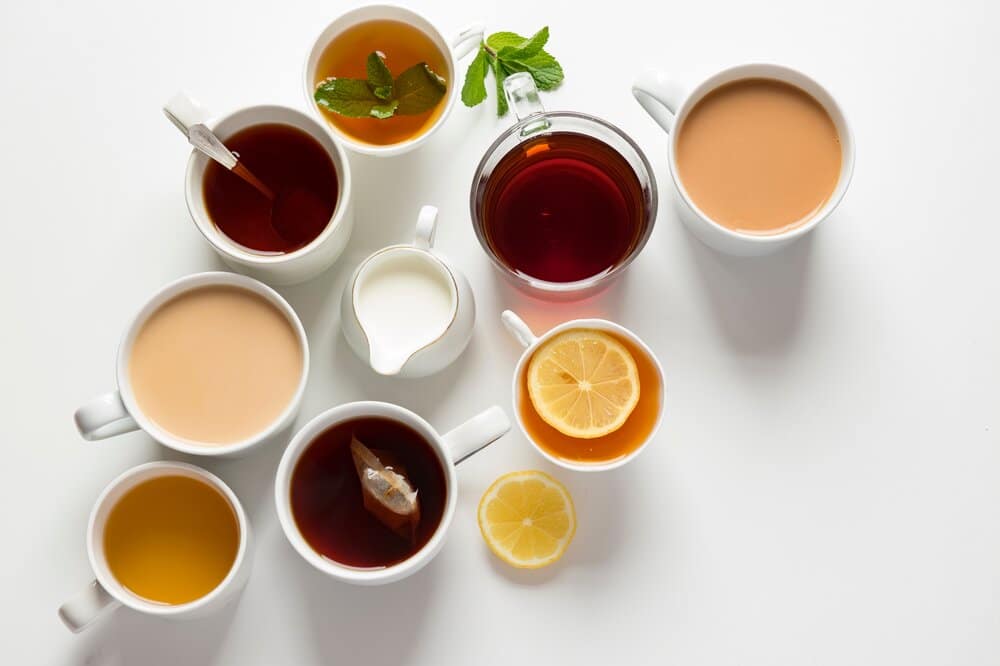By David Saunders, Health Editor | UPDATED: 08:28, 26 June 2020 | UPDATED: 12:42, 06 April 2020
A new report from the Tea Advisory Panel (TAP) reveals for the first time how making a daily brew can help to maintain inner calm in today’s frenetic lifestyles.
TEA AND SOPHROLOGY: How drinking tea taps into our inner body & mind zen combines the published science on tea and health – both mental and physical – with the practice of Sophrology, one of the top lifestyle trends for 2019. It has been written by dietitian and TAP member,
Dr Carrie Ruxton, with Dominique Antiglio, author of the best-selling book The Life Changing Power of Sophrology.
Lead author, Dr Carrie Ruxton, says: “What we do to our bodies affects our minds, and vice versa. We cannot deal with them as completely separate entities.
This is why optimal health depends very much on a whole-body approach, providing the right diet, exercise, sleep patterns and opportunities to relax and de-stress. Tea and Sophrology go together as they can both influence the whole body by targeting points of stress”.
The gentle discipline of Sophrology was developed 60 years ago by Columbian psychiatrist and neurologist, Professor Alfonso Caycedo who combined yoga, meditation, zen and classical relaxation to enable each individual to achieve optimal balance and harmony.
Sophrology expert, Dominique Antiglio explains: “Daily practice is achieved through a unique combination of relaxation, breathing, gentle movement and visualisation.
The practice is easy enough to be incorporated into daily life because it doesn’t need any special equipment or much time. The goal is not just to bring a focus to the five body systems but to develop a deeper awareness of our body in consciousness, and to use it to unlock harmony between body, mind and soul.”.
The TAP report examines the impact of different types of tea (black, green, herbal) on the 5 body zones targeted by Sophrology and recommends an exercise for each zone that can be tried at home or in the office.
The report also includes fun facts and stats about tea drinking gathered from a brand-new poll of 1000 British adults by TAP.
-
Black tea (the classic cuppa) is the tea most drunk in the UK, as chosen by 49 percent of respondents
-
On average, people drink four cups of tea a day
-
Men usually drink four cups a day and women will have three cups on average
-
Over half of people (55 percent) drink different types of tea and herbal infusions depending on what time of day it is
-
43 percent of black tea drinkers say it helps them start the day
-
34 percent find drinking black tea to be calming
-
32 percent think a cuppa makes them feel less stressed or anxious
-
98% of tea drinkers add milk to their tea making it a useful source of calcium in our diets
-
60 per cent of people say their mood influences their choice of tea
-
58 per cent think that a cup of tea helps them if they’re having a busy or stressful day
-
Excluding water, tea (63 per cent) is seen as the healthiest drink ahead of soft drinks (9 per cent) and coffee (8 per cent)
Key findings from the report for each body zone are:
1. Head, brain and face
Health concerns: cognitive function and performance, mood, feelings, oral health.
Tea evidence: Caffeine is proven to improve attention at intakes of 75mg within a 90-minute period. That equates to two mugs of black tea, or three mugs of green tea. Research also shows that L-theanine, an amino acid unique to tea, interacts with caffeine to enhance attention switching and the ability to ignore distractions.
Try drinking: A recent study found that daily consumption of 3g Matcha green tea significantly decreased markers of stress and anxiety compared with a placebo.
Sophrology exercise: Calm your overactive mind with the mindful breathing in this relaxing exercise. See our report for details.
Tea fact: 50 percent3 of people say that their mood changes after they’ve had a cup of their favourite tea.
2. Neck, throat, shoulders, arms and hands
Health concerns: bone health, muscular wellbeing, risk of cancers
Tea evidence: One study in over 1000 women found that regular tea drinkers had significantly greater hip bone mineral density than non-tea drinkers. This may be due to tea polyphenols but is also thought to be linked to calcium in the milk typically added. Six mugs of tea with 50ml semi-skimmed milk could provide around 370mg of calcium a day which is almost half of the Nutrient Reference Value.
Try drinking: One study in osteoporosis sufferers found that 3 months of consuming spearmint tea significantly reduced pain scores.
Sophrology exercise: Restore your energy by engaging your shoulders and arms in this exercise. See our report for details.
Tea fact: Men usually drink four cups a day and women will have three cups on average. Around 98% of tea drinkers will add milk.
3. Chest, upper back, breasts, heart and lungs
Health concerns: heart and vascular health, lung function and back pain.
Tea evidence: There is a huge amount of research into how drinking tea might benefit heart health, particularly vascular function. Research has found that drinking four to five cups of tea daily may reduce the risk of high blood pressure. The effect is thought to be due to natural compounds, called flavonoids, which stimulate the vasodilator, nitric oxide.
Try drinking: Regular tea. Meta-analyses find that both green and black tea drinkers have a reduced risk of heart disease than those who don’t drink tea.
Sophrology exercise: Is it a tummy breath or a chest breath? Use this exercise to relax your breathing. See our report for details.
Tea fact: 32 percent3 of Brits believe a cuppa makes them feel less stressed or anxious.
4. Stomach and upper digestive system, liver, kidneys, lower back
Health concerns: Gut health and comfort, liver and kidney function.
Tea evidence: Daily tea drinking appears to counteract the decrease in metabolic activity typically seen when people follow reduced calorie diets. The effect is believed to be linked to tea catechins and caffeine which appear to influence enzymes involved in thermogenesis, fat oxidation and preservation of muscle mass.
Try drinking: Green tea appears to increase leptin levels, making us feel fuller but only in studies longer
than 12 weeks. Leptin is a hormone which helps to promote a feeling of fullness after eating.
Sophrology exercise: Tame your tummy tension with visualization. See our report for details.
Tea fact: Excluding water, tea (63 percent) is seen as the healthiest drink ahead of soft drinks (9 percent) and coffee (8 percent).
5. Lower abdominal area, bladder, lower digestive tract, sexual organs, pelvic floor, hips, legs and feet.
Health concerns: Gut health and gastro-intestinal comfort, muscular health and urinary tract health.
Tea evidence: One study found that daily consumption of green tea for 10 days increased Bifidoba
cterium in the gut, suggesting it has potential for a prebiotic effect. Bifidobacterium are linked with reduced bloating and IBS, improved nutrient absorption and reduced risk of infections.
Try drinking: Komboucha is a fermented tea that provides beneficial microbes to our gut as well as tea polyphenols.
Sophrology exercise: Standing with your eyes closed, simply connect to the awareness of your lower tummy, pelvis, pelvic floor, legs and feet. Start to gently walk on the same spot noticing how your joints are moving, how your muscles react and imagine yourself connecting deeply with the ground below your feet perhaps visualising strong roots connecting you to the centre of the earth. See the TAP report – Tea and Sophrology: How drinking tea taps into our inner body & mind zen.
Tea fact: Over half3 of people (55 percent) drink different types of tea and herbal infusions depending on what time of day it is.
Concluding, Dr Carrie Ruxton, says: “Sophrology aims to bring harmony and balance to our lives by reinforcing connections between our mind and our bodies. As a method of ‘dynamic relaxation’, tea is the perfect way to bring this practice into our everyday lives”.





